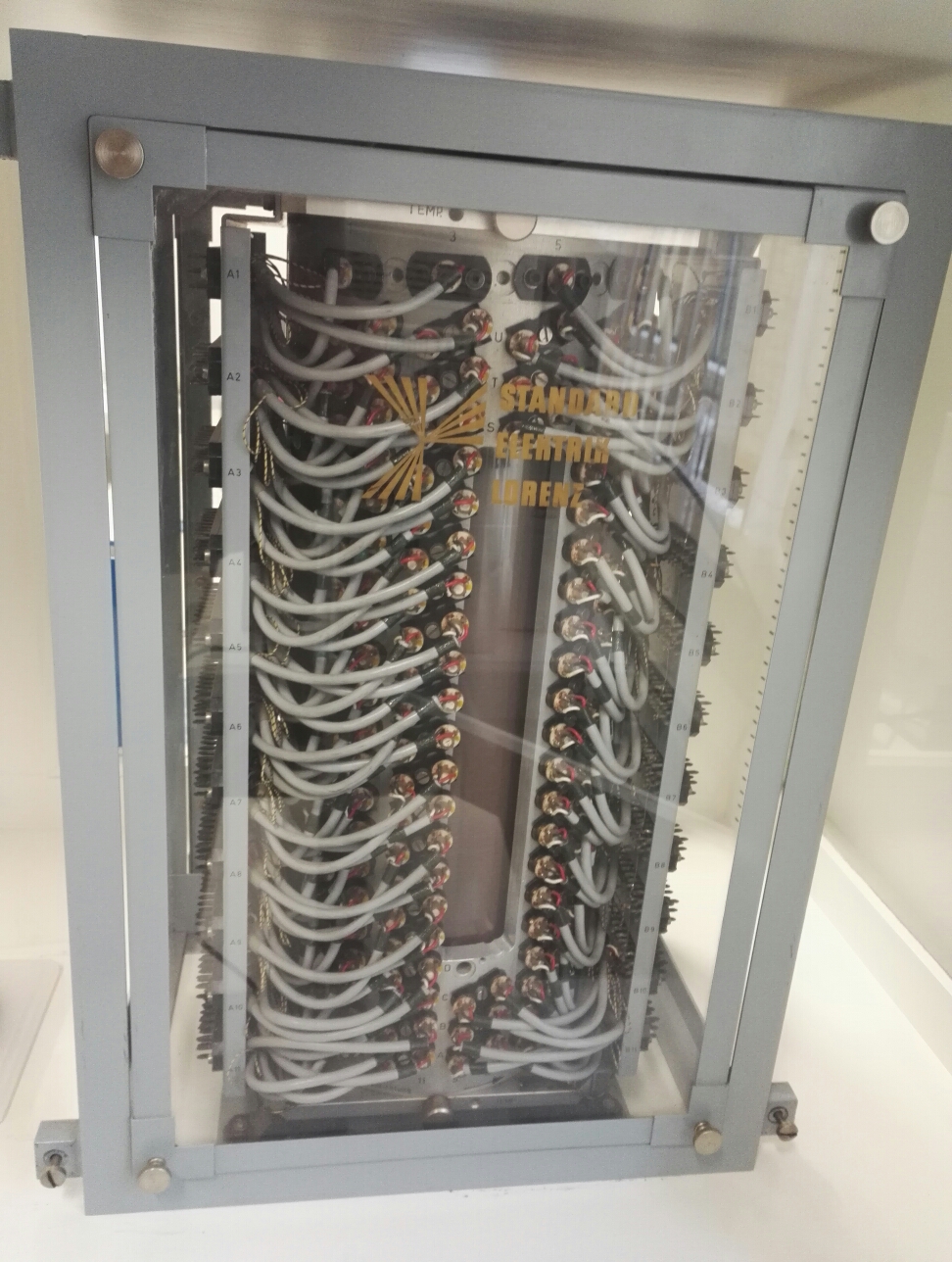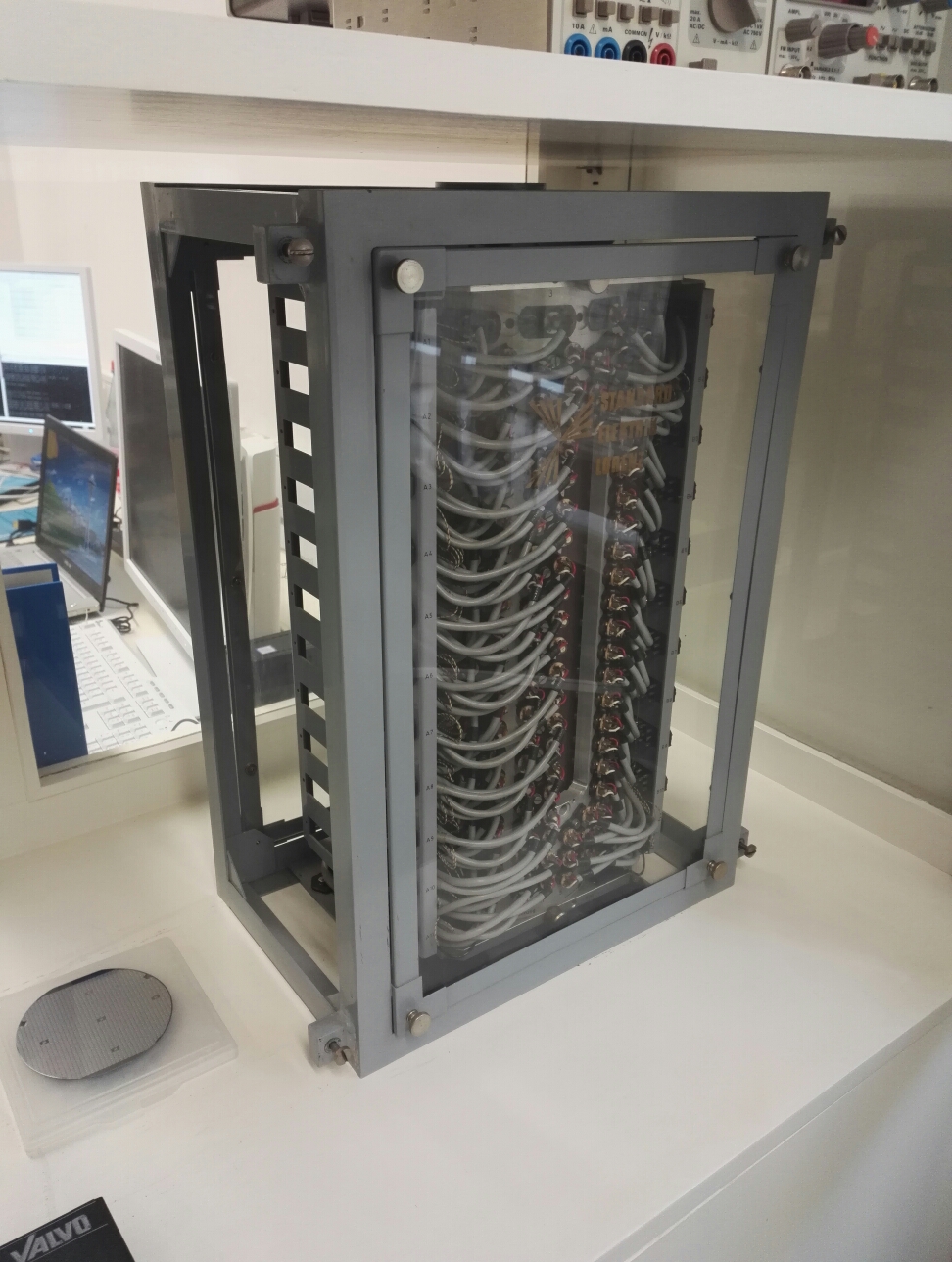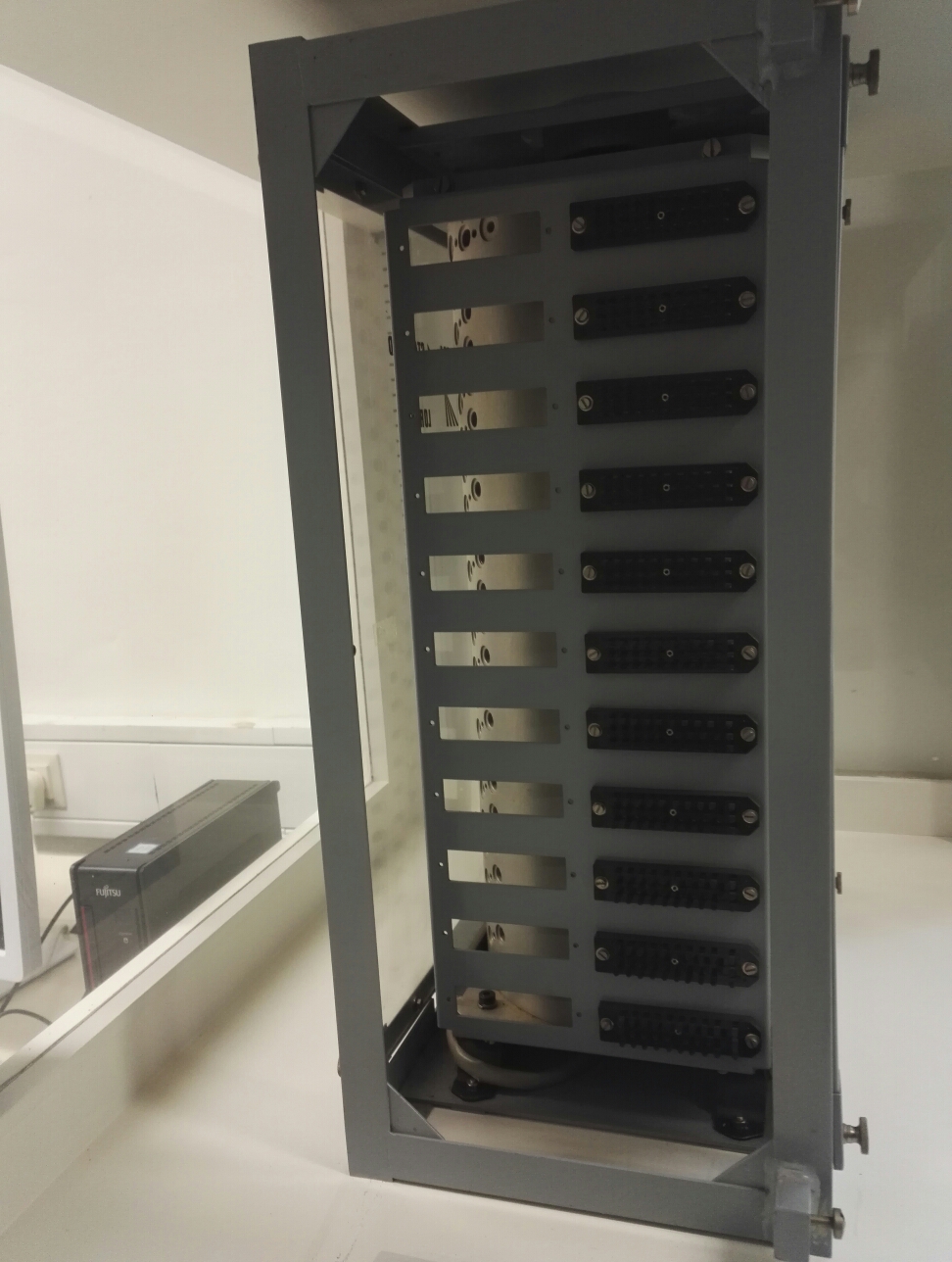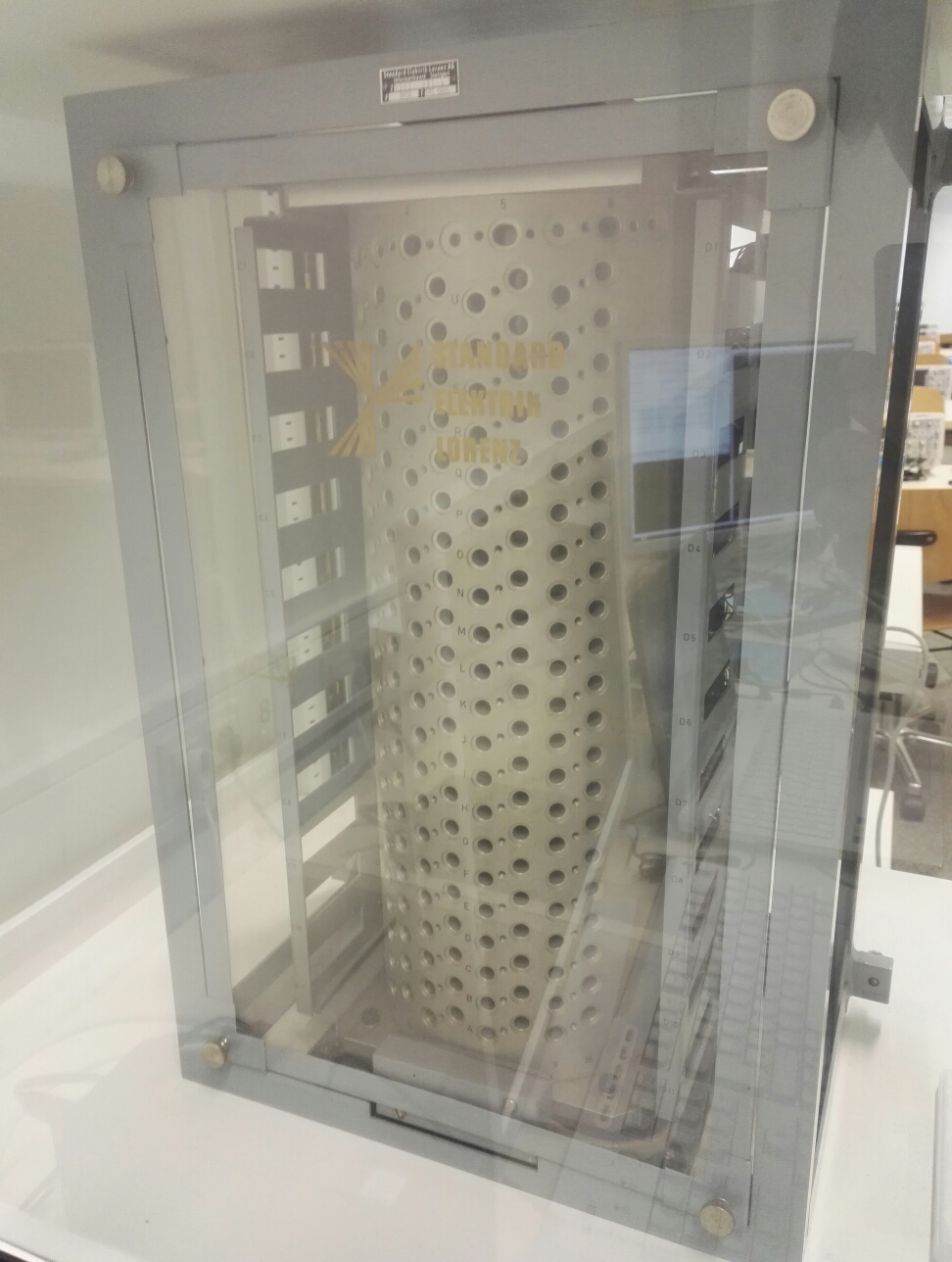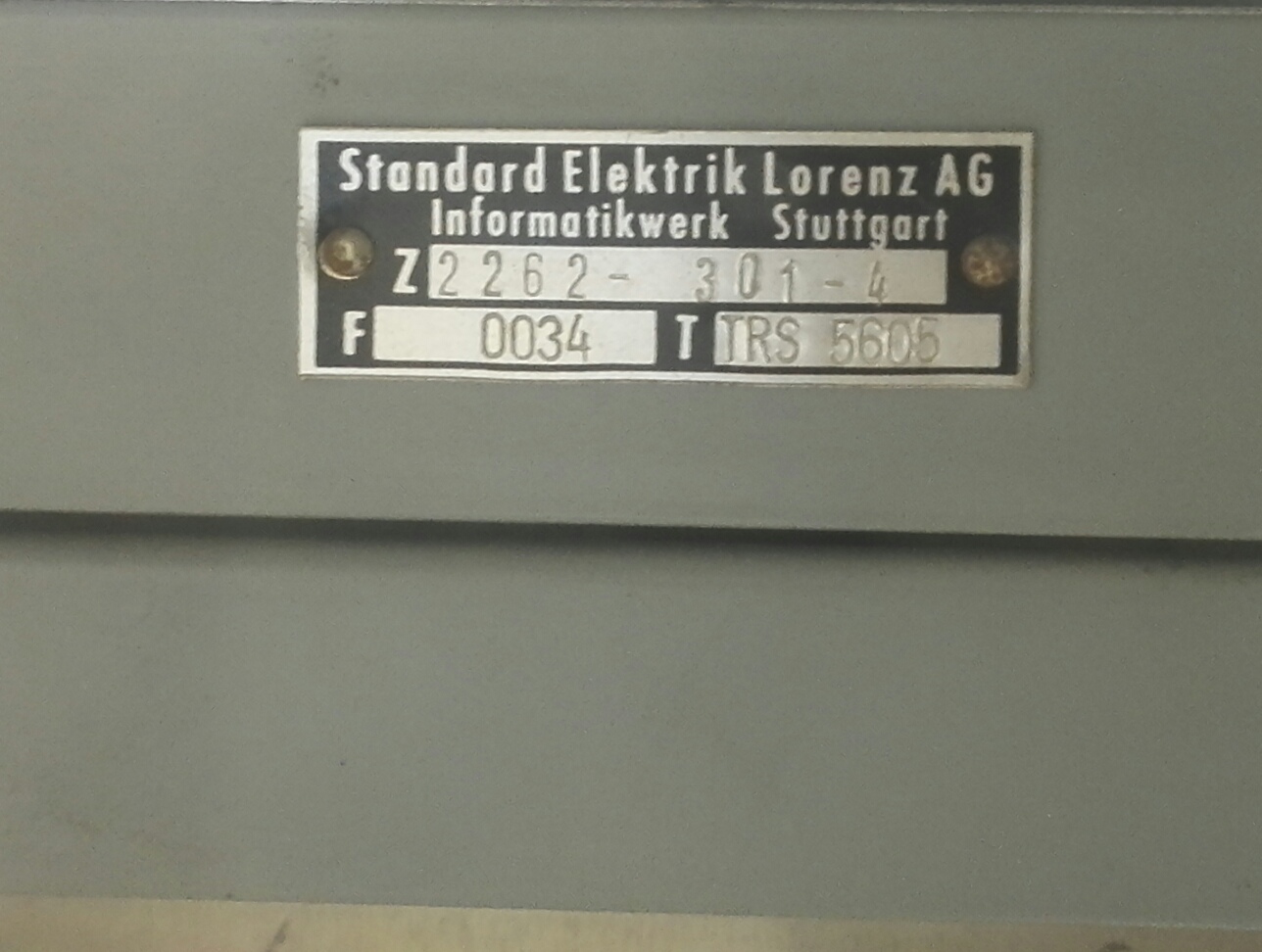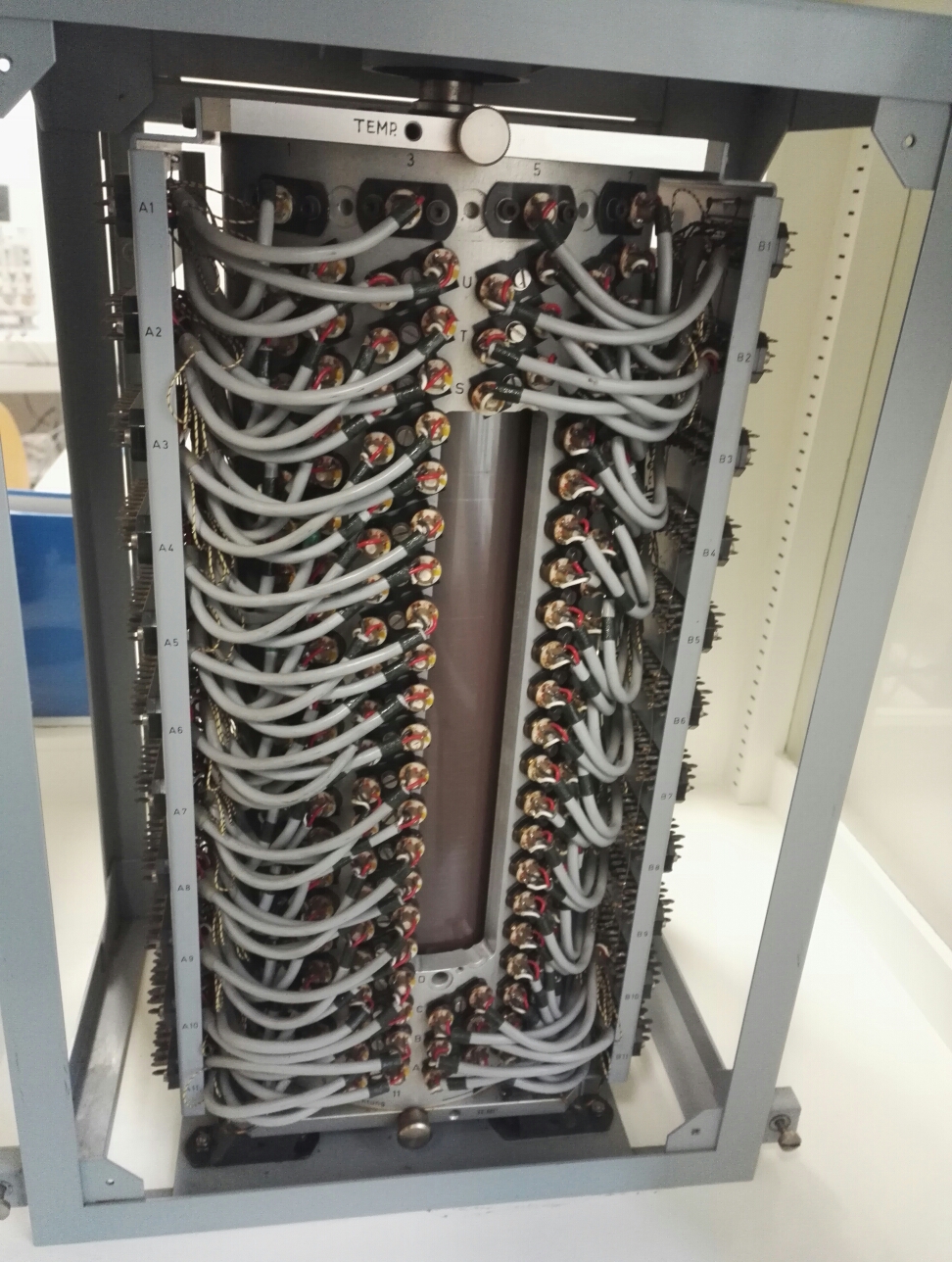Our own Z23 magnetic drum
Update This drum is most probably not from a Zuse machine, so the following paragraphs need some updates, see below.
Here are some pictures of the Zuse Z23 magnetic drum from my lab's little collection of antique computer hardware. Coburg Uni, like Erlangen, once had a Zuse Z23 -- sadly, the drum seems to be the only thing left of it.
Strangely, the label's serial number starts with "Z22", so I'm wondering if this drum was originally from a Z22 machine (the valve-based, mostly binary compatible, predecessor of the transistorized Z23).
Update A colleague from Erlangen University contacted me and wondered why this drum was manufactured by SEL (Standard Elektrik Lorenz) instead of the Zuse company. This would be highly unusual for a Zuse Z23 machine. In fact, it seems that the drum comes from an even older machine, the SEL ER56 [1]. This machine predates the Z23 by a few years (the Z23 was developed starting in 1958 and the first one delivered in 1961, whereas the documents available for the ER56 indicate its availability in 1959) and is believed to be the first transistorised computer in Europe.
The ER56 is not really well known in Europe and it seems no specimens have survived. However, it deserves special mention since it was designed by Karl Steinbuch, one of the pioneers of computer science in Germany, who is credited for coining the term "Informatik". Steinbuch then went on to teach as a professor at TH Karlsruhe (now KIT). Among his students are professors who now already are also retired, such as Rainer Hartenstein and Juergen Nehmer.
So, the next mystery is if Coburg University ever had an ER56 machine. So far, I could find references to the former locations of some ER56 machines. Two were used in Nuremberg (which is about 100 km away from Coburg) at Quelle, one of the largest German mail-order companies in the 1960s, and one at the Postscheckamt, which served as a bank and clearance institution for early cashless payment methods, operated by the German Federal Mail.
It would seem obvious that one of these machines, once decommissioned from their use in industry, was donated to the nearby Coburg University, as was common with valuable high-tech equipment back then (probably not only for altruistic reasons, but also as a way to get a tax write off...).
Other ER56 machines were used at TH Karlsruhe (in Prof. Steinbuch's institute), TH Stuttgart and the University of Cologne [2]. An article in the SPIEGEL magazine from January 1972 [3] mentions a strange episode in which a lecturer at the Stuttgart Academy of Arts donated two ER56 machines to the academy against the institutions' wishes.
If it turns out that Coburg University actually owned an ER56, I hope I can find out more about the history of the machine in Coburg. Otherwise, it will be almost as interesting to figure out how this magnetic drum came into the possession of my lab...
- [1] ER56 documentation
- [2] Taschenbuch der Informatik: Band I: Grundlagen der technischen Informatik Karl Steinbuch and W. Weber (Eds.). Springer-Verlag, 1974, ISBN 978-3-642-65584-5
- [3] SPIEGEL ER56 article
